Make your rice cooker work harder with this simple upgrade: swap water for chicken broth, add frozen edamame, and watch your rice go from 2 grams of protein to 9 grams per serving. No powder, no fuss, just a better way to build balanced thalis in 25 minutes.
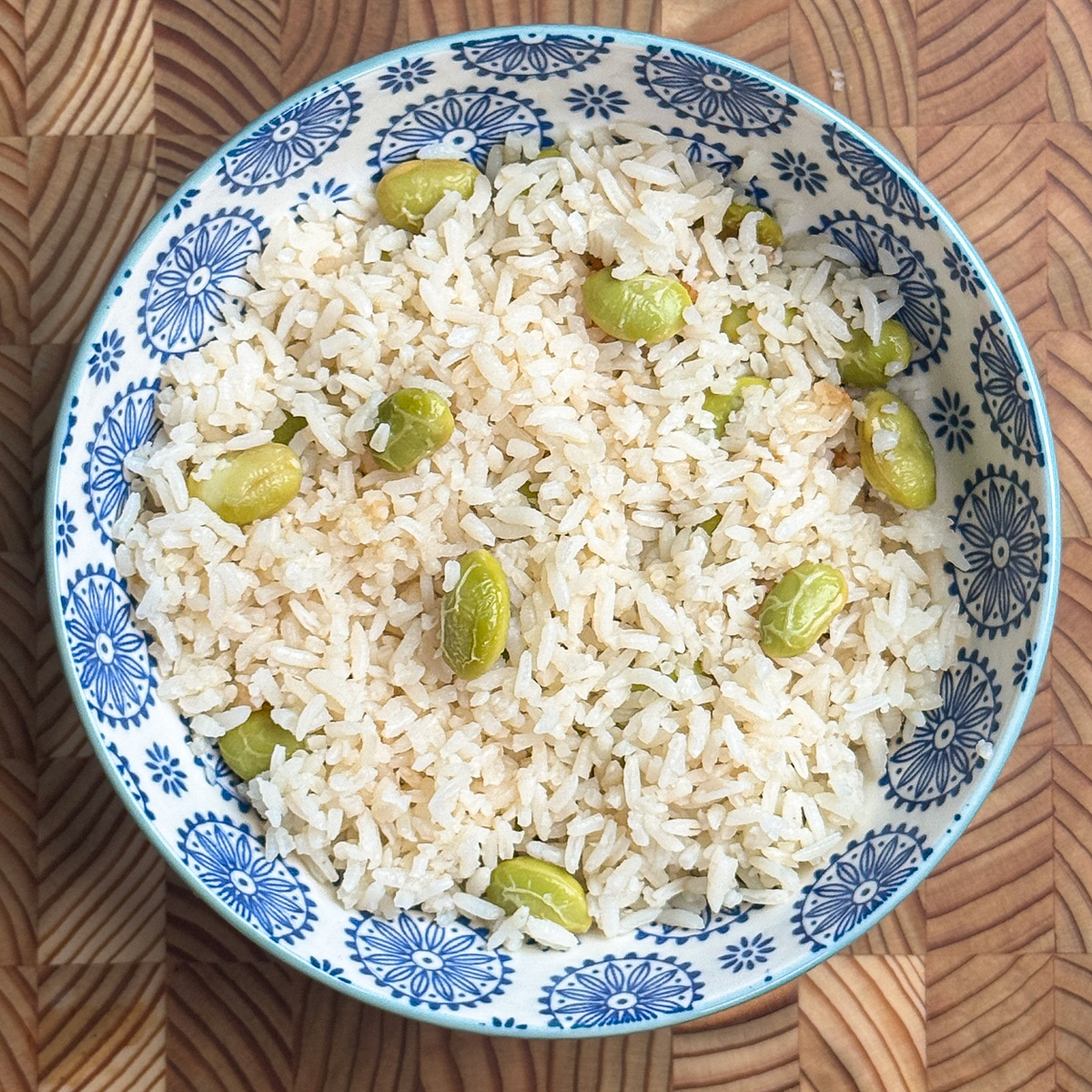
The Problem You're Actually Solving
Tuesday evening hits differently when your rice feels like it's just filling your plate with carbs while your protein goals stay out of reach. High-protein edamame rice with chicken broth answers that problem. By swapping water for broth and stirring in frozen edamame, you're adding 9g of protein per serving without powder, fuss, or deviation from the balanced thali eating you already love.
Jump to:
- The Problem You're Actually Solving
- What Makes High Protein Edamame Rice with Chicken Broth So Nutritious
- Key Ingredients
- Instructions to Make High Protein Edamame Rice
- Serving Ideas and Variations
- Substitutions
- Storage
- Nutrition
- Your Questions Answered
- Meal Prep and Freezer Strategy
- Bringing It Together
- High-Protein Edamame Rice with Chicken Broth
What Makes High Protein Edamame Rice with Chicken Broth So Nutritious
When you're eating dal and rice for dinner but watching your protein intake, regular rice feels like it's working against you. One serving of basic white rice has only 2 to 3 grams of protein. That's barely a dent in your daily needs.
This recipe changes that equation:
- 9g of protein per serving from the combination of broth and edamame
- Amino acids and collagen absorbed from the bone broth as the rice cooks
- Plant-based protein from edamame without needing to add powder or special ingredients
- 31g of carbohydrates paired with actual protein and fiber for blood sugar stability
- Only 175kcal per serving, so you're not adding empty calories to your thali
Compare this to regular white rice at 112kcal calories with 2g of protein, and you're getting 7 extra grams of protein and significantly better nutrition without changing your cooking method. Your rice cooker does the same job it always does. The only difference is what goes in and what you get out.
🥗 Edamame White Rice vs. Plain White Rice: Nutrition Comparison (Per Serving)
| Recipe ↕ | Serving | Calories ↕ | Protein (g) ↕ | Fiber (g) ↕ | Fat (g) ↕ | Carbs (g) ↕ |
|---|---|---|---|---|---|---|
| High-Protein Edamame Rice with Chicken Broth | 1 serving (145g each) | 175 | 9 | 1 | 2 | 31 |
| White Rice (Rice Cooker Method) | 1 bowl (100g Cooked Rice) | 112 | 2 | 0 | 0 | 25 |
For someone juggling work, family, and the desire to eat food that actually supports your body, this is the kind of simple upgrade that compounds over time. One dinner's difference seems small. But 20 dinners a month? That's a completely different story.
Key Ingredients
This recipe works because three simple components do all the heavy lifting. No exotic ingredients, no complicated sourcing, just three things your grocery store already has waiting for you.
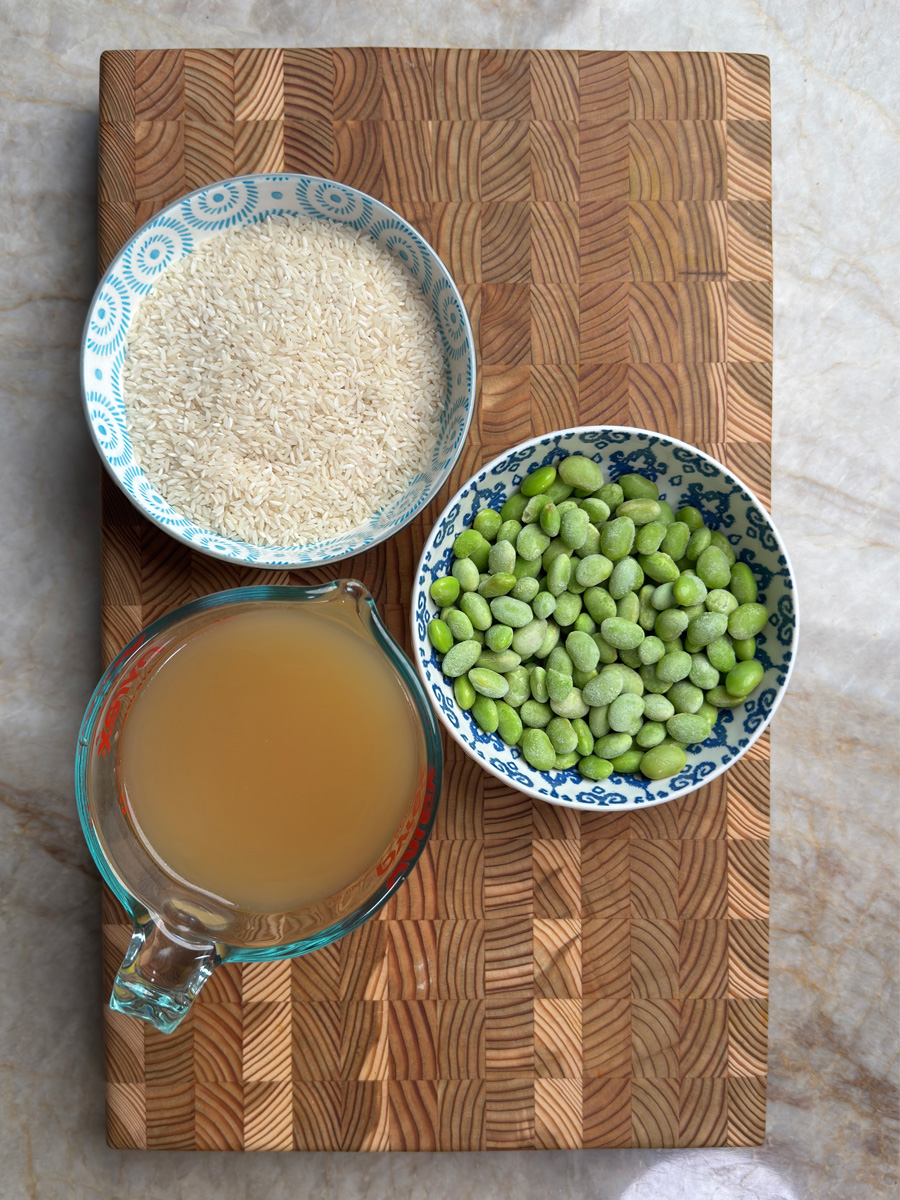
White Rice (Sona Masori or Basmati Preferred)
White rice is your neutral canvas here. When you cook it in broth instead of water, the grains absorb all that savory, protein-rich liquid. Sona masuri has a slightly shorter grain and delicate texture that pairs beautifully with Indian curries and dals. If you only have basmati or regular long-grain white rice, they work perfectly too.
The key is using uncooked rice that you rinse before cooking. This removes excess starch and gives you fluffy, separate grains instead of a gummy mass.
Frozen Edamame, Shelled
Edamame are immature soybeans, and they're already blanched when they're frozen. This means they're ready to go straight into your rice cooker with zero prep. They just need to warm through during the final cooking cycle, and they stay tender with a slight firmness instead of getting mushy.
Most grocery stores stock frozen shelled edamame in the freezer section near peas and corn. They're inexpensive, they keep for months, and they add significant plant-based protein without any extra cooking steps.
Chicken Bone Broth
This is where the magic happens. Bone broth contains collagen, amino acids, and micronutrients that regular water doesn't have. When your rice absorbs the broth during cooking, it absorbs all those nutrients too.
Use low-sodium broth so you control the salt in your finished dish. The 2.25 cup ratio to 1 cup rice is the sweet spot for perfectly cooked, fluffy rice that absorbs all the broth's benefits.
Smart Shopping Tips
- Buy frozen edamame in bulk when they're on sale: they freeze for months and eliminate weeknight prep
- Choose low-sodium broth and taste before adding extra salt to your rice
- Sona masuri rice often costs the same as regular long-grain white rice but delivers better texture
Instructions to Make High Protein Edamame Rice
The beauty of this recipe is that your rice cooker does 95% of the work. You're handling rice for exactly 3 minutes before the button goes down and your weeknight stress goes down with it.
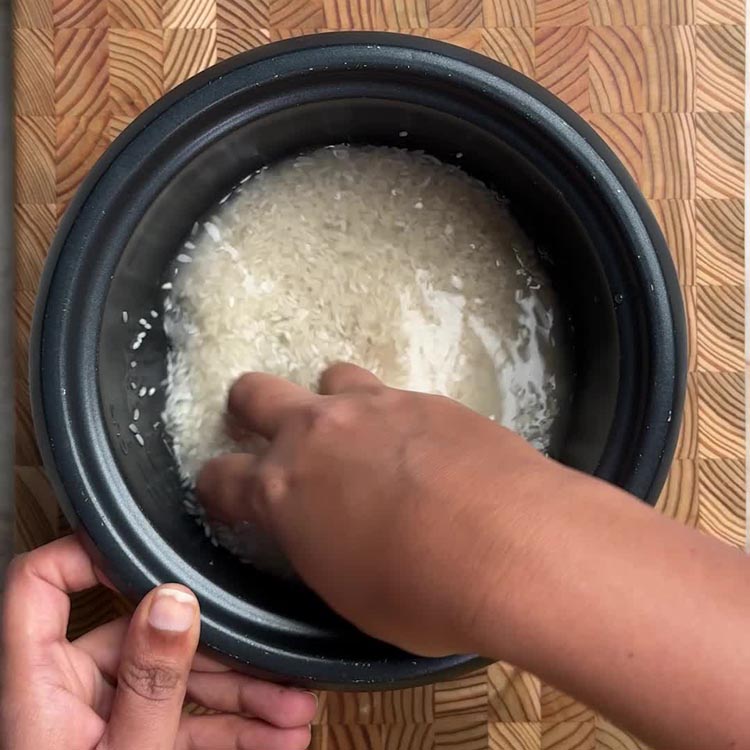
- Rinse the Rice: Place 1 cup white rice in a fine mesh strainer and rinse under cool running water until the water runs clear. This removes excess starch for fluffy grains.
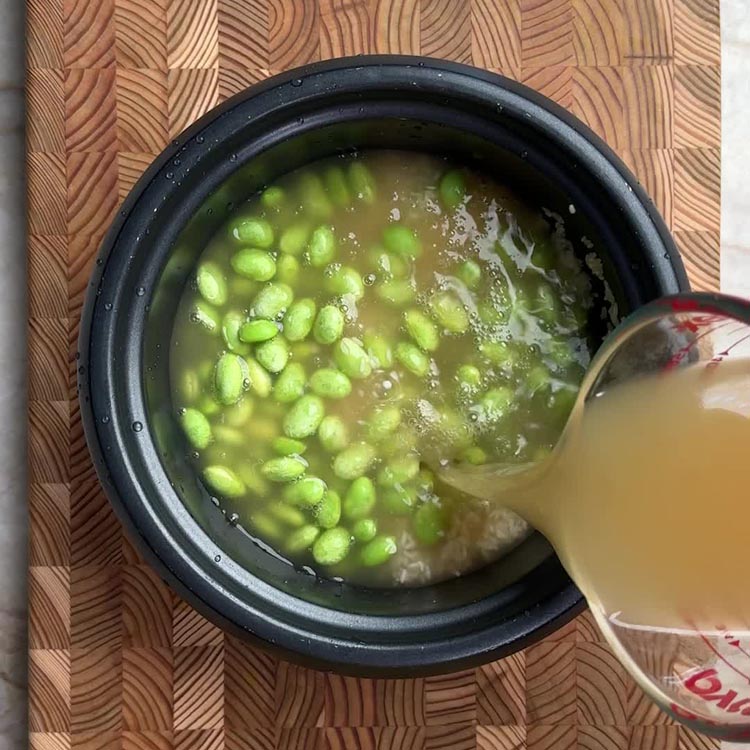
- Add to Rice Cooker: Transfer rinsed rice to your rice cooker bowl. Add 1 cup frozen edamame and stir to distribute. Pour 2.25 cups chicken broth over top and stir well.
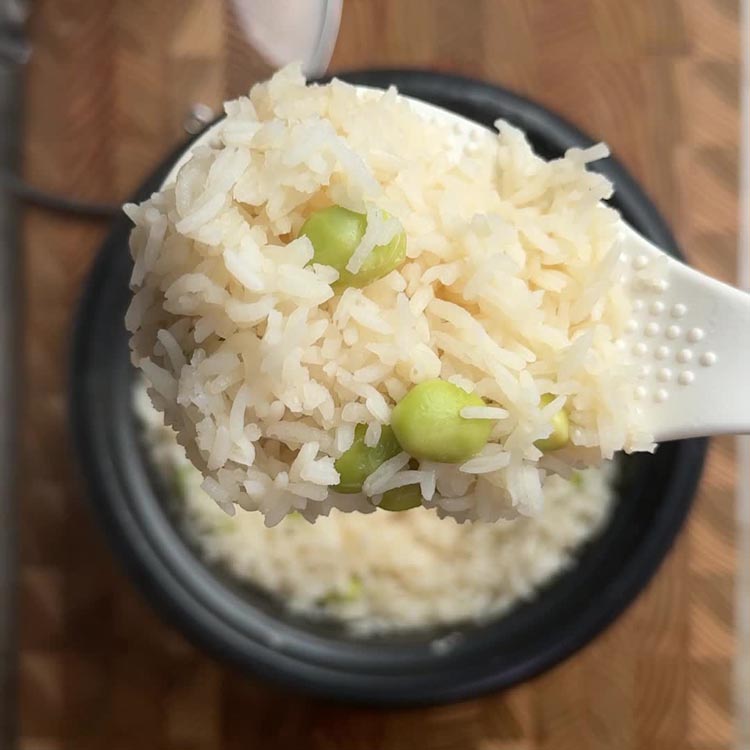
- Close and Cook: Close the lid, press start, and let your rice cooker do the work. It will automatically switch to warm when cooking is complete (about 18 to 20 minutes).

- Rest and Fluff: Once cooking completes, let the rice rest in the cooker for 5 minutes with the lid closed. Then fluff gently with a fork, distributing the edamame throughout. Serve immediately or portion for meal prep.
For complete step-by-step instructions with exact measurements, see the recipe card below.
Pro Tips for Best Results
- Don't open the lid while cooking: Every time you lift it, you release steam and potentially cook the rice unevenly. Trust the timing.
- Rinse thoroughly: This is not optional. Cloudy water means starch still coating the grains. Keep rinsing until water runs clear.
- Stir after adding broth: Make sure nothing sticks to the bottom of the rice cooker and all the rice gets contact with the broth.
- Use low-sodium broth: This gives you control over the final salt content. Store-bought broths vary widely in sodium, and you want to taste yours before adding more.
- Rest the rice: Those 5 minutes of resting are when the carryover cooking happens and flavors fully develop. Don't skip them.
Make-Ahead Strategy
Cook a double or triple batch on Sunday and portion it into containers with your favorite dal. This edamame rice actually improves as it sits, with flavors developing overnight. Refrigerate in airtight containers for up to 5 days, or freeze for up to 3 months. When reheating, add a splash of water or broth and warm gently in a pan or microwave.
Serving Ideas and Variations
How to Serve This Rice
This edamame rice is a true team player in a thali. It's not competing with your dal or salad; it's supporting them by contributing real nutrition instead of just carbs.
Vegetarian Protein Thali: Pair with our Tomato Pappu dal and Cucumber-Peanut Salad. You've got plant-based protein from three sources: edamame, lentils, and peanuts.
Comfort Dal Thali: Serve with Channa Masala dal and fresh sliced cucumbers on the side. The broth-cooked rice absorbs all those dal flavors, so every bite feels intentional and connected.
Quick Weeknight Thali: Edamame rice, Carrot-Coconut Salad, and sliced cucumbers. This comes together in under 30 minutes and feels like a complete meal because it is.
Just like our Balanced Channa Masala Thali uses pine nuts to boost protein, this edamame rice is your protein-power side dish that makes every thali more nutritionally complete.
Delicious Variations
Turmeric and Cumin Seeds Edamame Rice: Add ¼ teaspoon turmeric and 1 teaspoon cumin seeds to the broth for an anti-inflammatory boost and beautiful golden color. Nutrition impact: same protein, added anti-inflammatory compounds.
Coconut Edamame Rice: Use half coconut milk and half broth for a creamier texture. Nutrition impact: adds healthy fats and coconut's beneficial compounds, increases richness without losing protein.
Mushroom or Broccoli Edamame Rice: Sauté sliced mushrooms or Broccoli in the rice cooker bowl before adding rice for an earthy variation. Nutrition impact: adds umami, B vitamins, and stays dairy-free.
Substitutions
No edamame? Use frozen peas, corn, or green beans. You'll lose protein but gain vegetables. For maximum protein, use cooked chickpeas or white beans instead.
No bone broth? Regular chicken stock works but loses the protien. The protein boost comes from the broth itself plus the edamame. You can also add 2 tablespoon of nutritional yeast for extra protein.
Can't find sona masuri? Any white rice works. Basmati gives you elegance. Regular long-grain gives you budget-friendly options. All will cook beautifully with this broth ratio.
Storage
Refrigerator: Store cooked edamame rice in airtight containers for up to 5 days. The rice becomes slightly firmer as it cools, which is ideal for portioning.
Freezer: Portion into freezer-safe containers or silicone ice cube trays for smaller portions. Keeps for up to 3 months. Thaw overnight in the fridge and reheat gently in a pan with a splash of broth, or reheat directly from frozen in the microwave.
Meal Prep Tip: If freezing, slightly undercook the rice by 1 minute so it doesn't turn mushy when you reheat. It'll cook that final bit as it warms.

Nutrition
One serving of high-protein edamame rice with chicken broth, which is 1 serving (145g each), contains 175kcal calories with 9g of protein, 1g of fiber, and 31g of carbs. You're getting a better protein-to-carb ratio than regular rice, which means better blood sugar stability and longer-lasting fullness.
Your Questions Answered
Regular white rice has about 2 to 3 grams of protein per serving. This edamame rice has 9g. That's triple the protein without any powder or complicated additions. The combination of chicken broth's amino acids and edamame's plant-based protein creates that boost.
Regular chicken broth works perfectly. For a vegetarian option, use vegetable broth and add 2 tablespoons of nutritional yeast to boost protein. The protein boost comes from the broth itself plus the edamame, so you're covered either way.
Yes, but use slightly less liquid: 1.5 cups broth to 1 cup rice instead of 2.25 cups. The pressure cooking is more efficient at extracting moisture, so adjust accordingly. Add edamame after the pressure cooking cycle completes.
Absolutely. Bring 2.25 cups broth to a boil, add rinsed rice, stir once, add edamame, cover, reduce to low heat, and simmer 15 to 18 minutes until liquid is absorbed. Rest covered for 5 minutes before fluffing.
Yes, they freeze and thaw beautifully. The slight firmness they have actually holds up better through the freeze-thaw cycle than mushier vegetables would.
Not as written because of the chicken broth, but swap vegetable or mushroom broth for a completely vegan version. You'll still get 6 to 7 grams of protein per serving from the edamame.
Meal Prep and Freezer Strategy
This is where high-protein edamame rice stops being just dinner and becomes your entire weeknight solution.
The Sunday Prep Strategy: Cook a triple batch (3 cups rice, 3 cups edamame, 6.75 cups broth). This takes exactly 25 minutes and gives you enough rice for 9 servings. Portion it into containers with your favorite dal and salad from earlier in the week.
Container Strategy: Use rectangular glass containers where you can layer rice on one side, dal on the other, with salad in a small compartment. This way nothing gets soggy, and your balanced thali is literally already assembled when you grab it from the fridge.
Freezing for Later: Freeze individual portions in silicone ice cube trays for smaller amounts you can thaw quickly, or use larger containers for full thali portions. Everything thaws beautifully and reheats without texture loss.
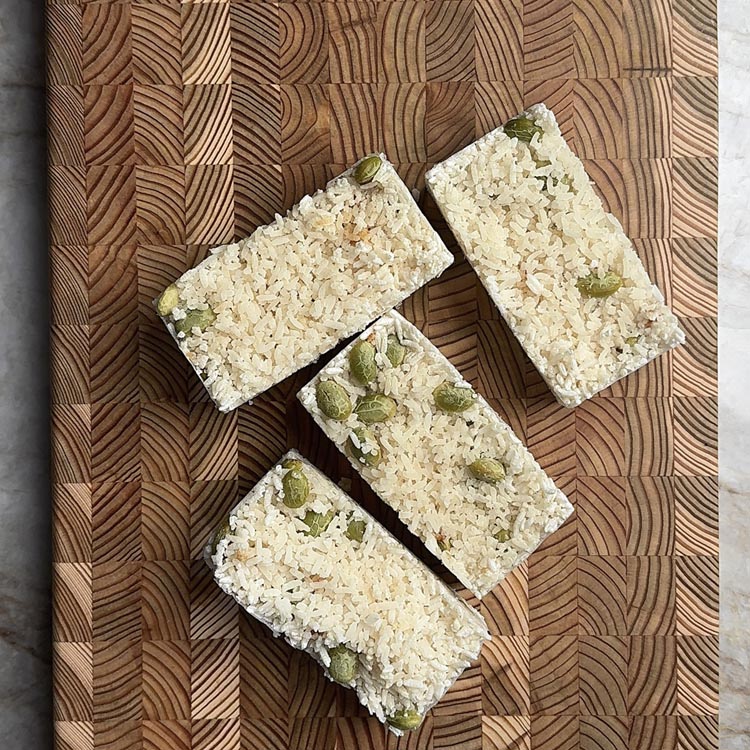
Timeline: Prep Sunday, enjoy Monday through Wednesday fresh from the fridge. Wednesday night's portions can go into the freezer for next week's backup meals. Zero stress, zero waste.
Bringing It Together
High-protein edamame rice with chicken broth solves Tuesday's rice problem: 9 grams of protein in 25 minutes, freezer-friendly, and perfectly aligned with balanced eating. Your rice cooker, edamame, and broth are waiting. What's your favorite dal to pair with this?
Pair it with these:
High-Protein Edamame Rice with Chicken Broth
Ingredients
- 1 cup (220 g) Sona Masoori rice - uncooked, sona masuri or basmati preferred
- 1 cup (160 g) edamame - shelled
- 2.25 cup (532.32 ml) chicken bone broth - low sodium preferred
Instructions
For the Rice Cooker Method:
- Place 1 cup Sona Masoori rice in a fine mesh strainer and rinse thoroughly under cool running water until the water runs clear. This removes excess starch and helps the rice cook evenly and fluff perfectly.
- Transfer the rinsed rice to your rice cooker bowl. Add 1 cup edamame and stir to distribute evenly throughout the rice. The frozen edamame are already blanched, so they just need to warm through.
- Pour 2.25 cup chicken bone broth into the rice cooker and stir well to combine. The broth absorbs into the rice as it cooks, boosting the protein content to 9g per serving.
- Close the rice cooker lid and press start. The rice cooker will automatically switch to warm when the rice is done, which takes approximately 18 to 20 minutes.
- Once the cooking cycle completes, let the rice rest in the cooker for 5 minutes with the lid closed. This allows any remaining moisture to absorb and flavors to settle throughout the rice.
- Open the lid and gently fluff the rice with a fork, stirring to distribute the edamame evenly. Taste and adjust salt if needed. Serve immediately as a side dish or use in thali bowls with your favorite dal and curry.

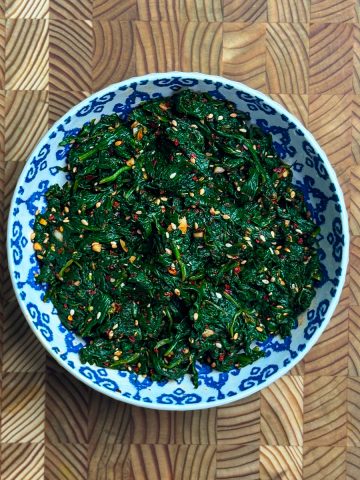
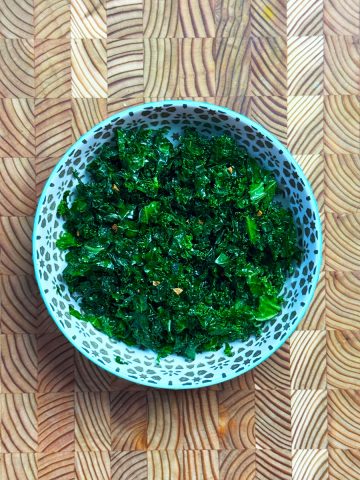
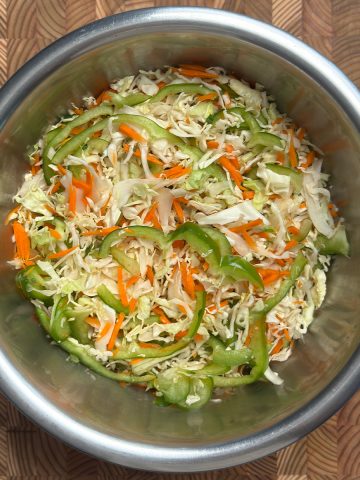


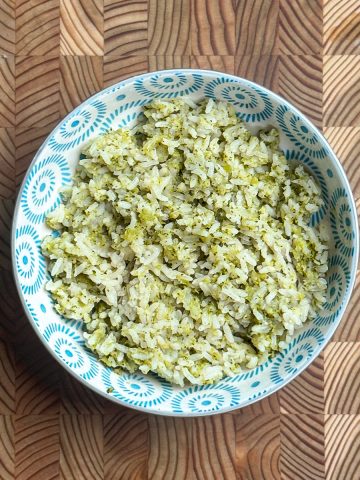
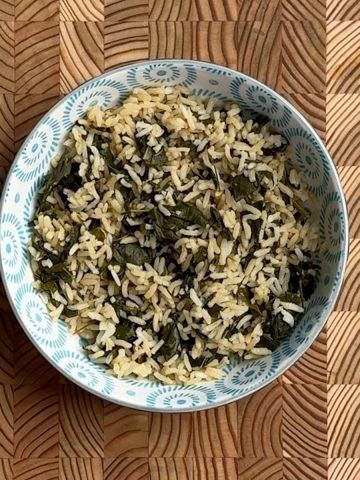
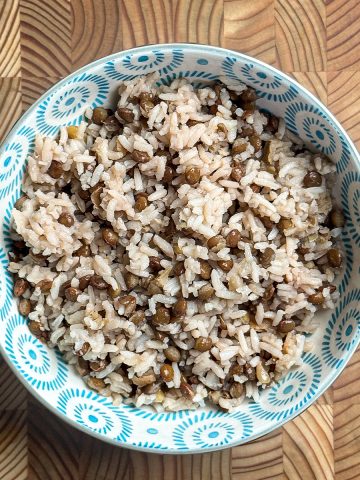
Leave a Reply